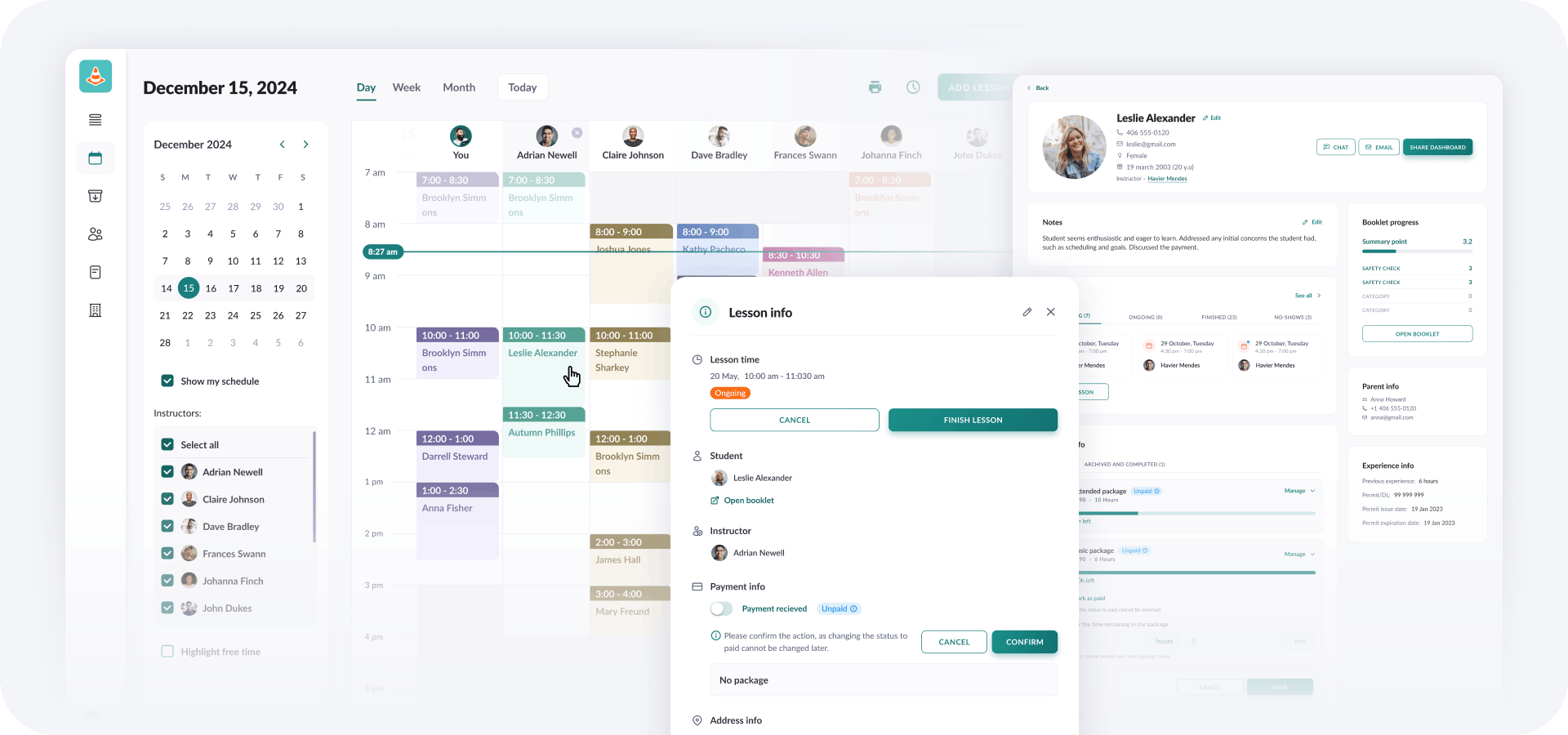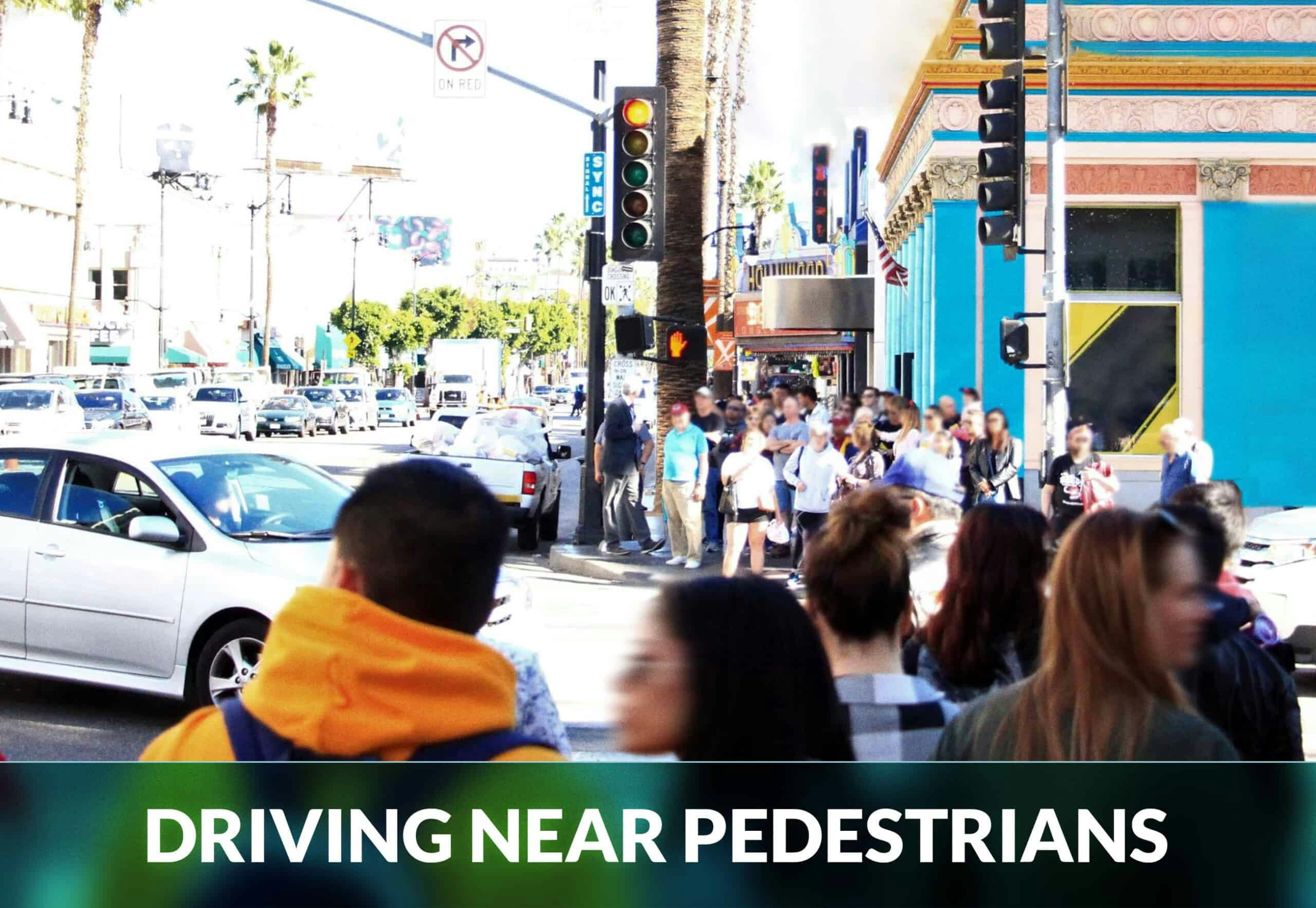
Pedestrian Right-Of-Way & Sharing the Road With Pedestrians
This guide will show you all you need to know about how to safely share the road with pedestrians.
It’s essential that you know how to drive near pedestrians, what the hidden dangers are and when to yield the right-of-way.
That’s how you can avoid traffic accidents and make the roads a safer place for everyone.
Sounds good? Let’s dive right in!
Who Is a Pedestrian?
A pedestrian refers to a person on foot, walking, running, jogging, hiking, sitting, lying down or using a conveyance other than a bicycle (skateboards, wheelchairs etc.).
How to deal with pedestrians on the driving test
Pedestrian Safety
Pedestrian safety is a huge part of driving and involves everyone on the roads – there are well over 5,000 pedestrian fatalities per year in the U.S. due to traffic crashes.
Think about that for a second… 5000 crashes each year that result in pedestrian fatalities! That’s a BIG number.
As a driver, you often face situations involving pedestrians and must be prepared to stop for them. Pedestrians may be unaware of the road rules or for other reasons enter the road environment unexpectedly.
Here are a few driving tips for pedestrian safety to avoid traffic collisions:
- You should slow down and be very careful in darkness and other low-visibility situations (e.g. rain) as more than half of pedestrian fatalities occur during these times.
- Be extra alert around the elderly, children, and those affected by alcohol or drugs as they may be less alert themselves
- When driving in populated areas, watch out for pedestrians at all times. Even if a pedestrian is in the wrong, you are still obliged to avoid a collision.
Remember – pedestrians hit by vehicles traveling at speeds exceeding 25 mph are unlikely to survive. Sharing the road with pedestrians requires alertness, preparedness and patience.
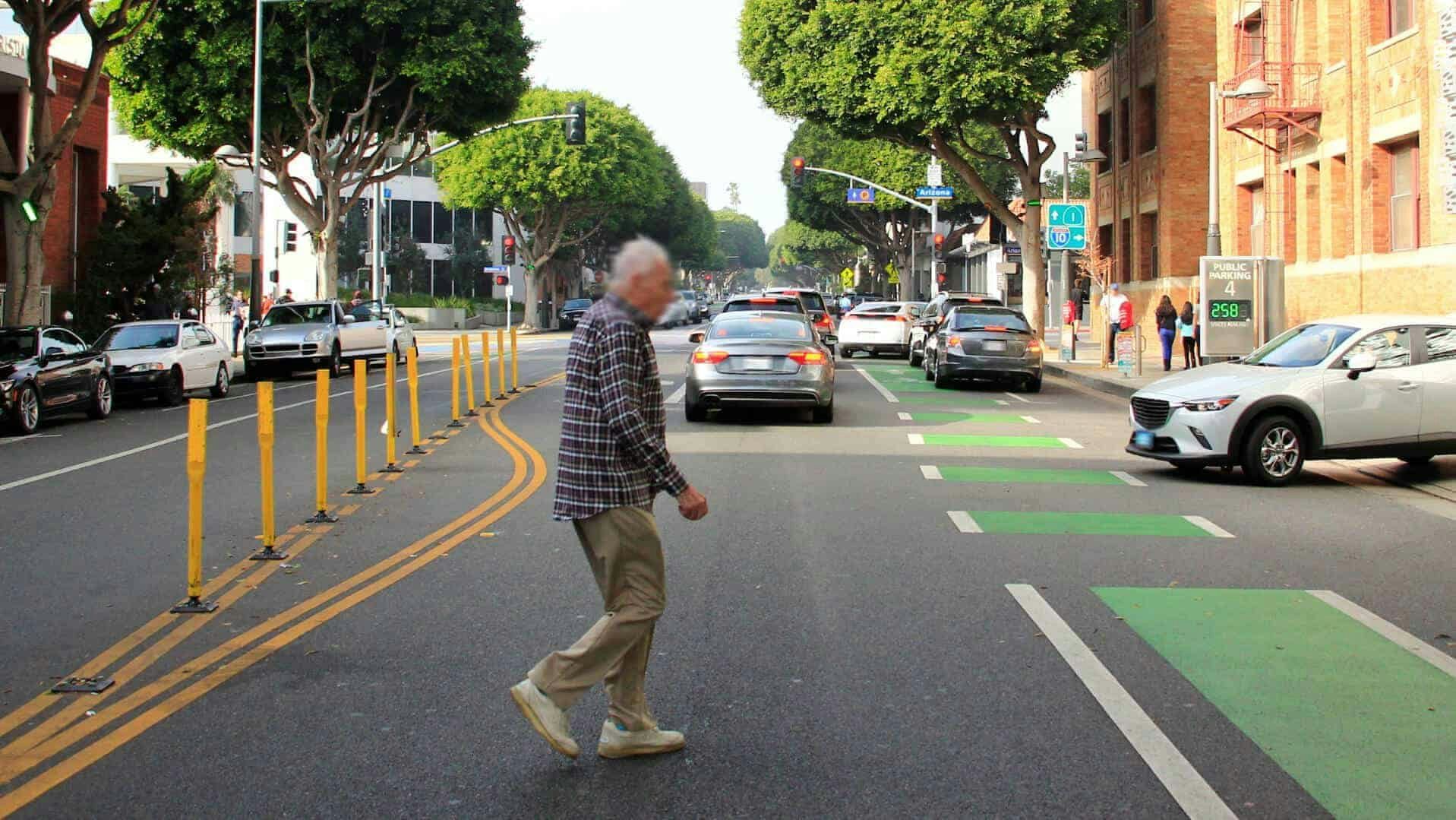
When Should You Yield to Pedestrians?
There are many situations when you must yield the right-of-way to pedestrians. Pedestrians are vulnerable in a crash, and they are therefore protected by right-of-way rules.
Look out for and yield to pedestrians:
- while leaving a driveway or parking lot
- at pedestrian crossings or crosswalks
- in the presence of children playing in the street or near street corners
- in school zones
- at unmarked intersections
Leaving a Driveway
Yield for pedestrians on the sidewalk when turning on/off a private road, alley or driveway. Don’t drive on a sidewalk for any other purposes.
Crosswalks

A crosswalk is a part of the road that is specifically set aside for pedestrians. Crosswalks are often marked by white lines, but unmarked crosswalks exist especially in residential areas. Remember that every intersection is a crosswalk, even if it’s unmarked.
Pedestrians have the right-of-way at all types of crosswalks, but must also follow the road rules. For example, a pedestrian shouldn’t suddenly cross into the path of a vehicle and create a dangerous situation.
Pedestrians have their own rules and must adhere to traffic signs such as school crossing signs and other pedestrian crossing signs.
Here Are 6 Right-Of-Way Rules to Follow at Pedestrian Crossings
- Reduce speed and proceed with caution when approaching a crosswalk to ensure the safety of pedestrians
- Stop and yield to pedestrians crossing any marked pedestrian crossing or intersection, even when traffic signs are missing.
- Never overtake a vehicle stopped at a crosswalk. Assume that a pedestrian may be crossing, even though you are unable to see anyone
- When stopping at a red light, don’t stop or block any part of the crosswalk
- Give way to anyone still crossing after the signal for vehicles has changed to green
- Allow children, elderly and disabled persons extra time to cross the road
Some crosswalks have flashing lights to warn drivers of crossing pedestrians, but you should always be ready to stop as pedestrians may cross even when the lights aren’t flashing.
When driving near pedestrians, constantly scan the area near the vehicle and expect pedestrians to commit traffic errors – that way you will be prepared for the worst.
Around Children

Children often don’t understand the dangers of traffic, and you must remember that as a driver if you think there may be children nearby.
Drive slowly and display caution near playgrounds, schools, buses, parks and other areas where children are likely to be.
When reversing near children, get out of your vehicle and check before you reverse. Don’t rely on mirrors alone – many children are short enough to be hidden from view by the rear of a car.
School Zones
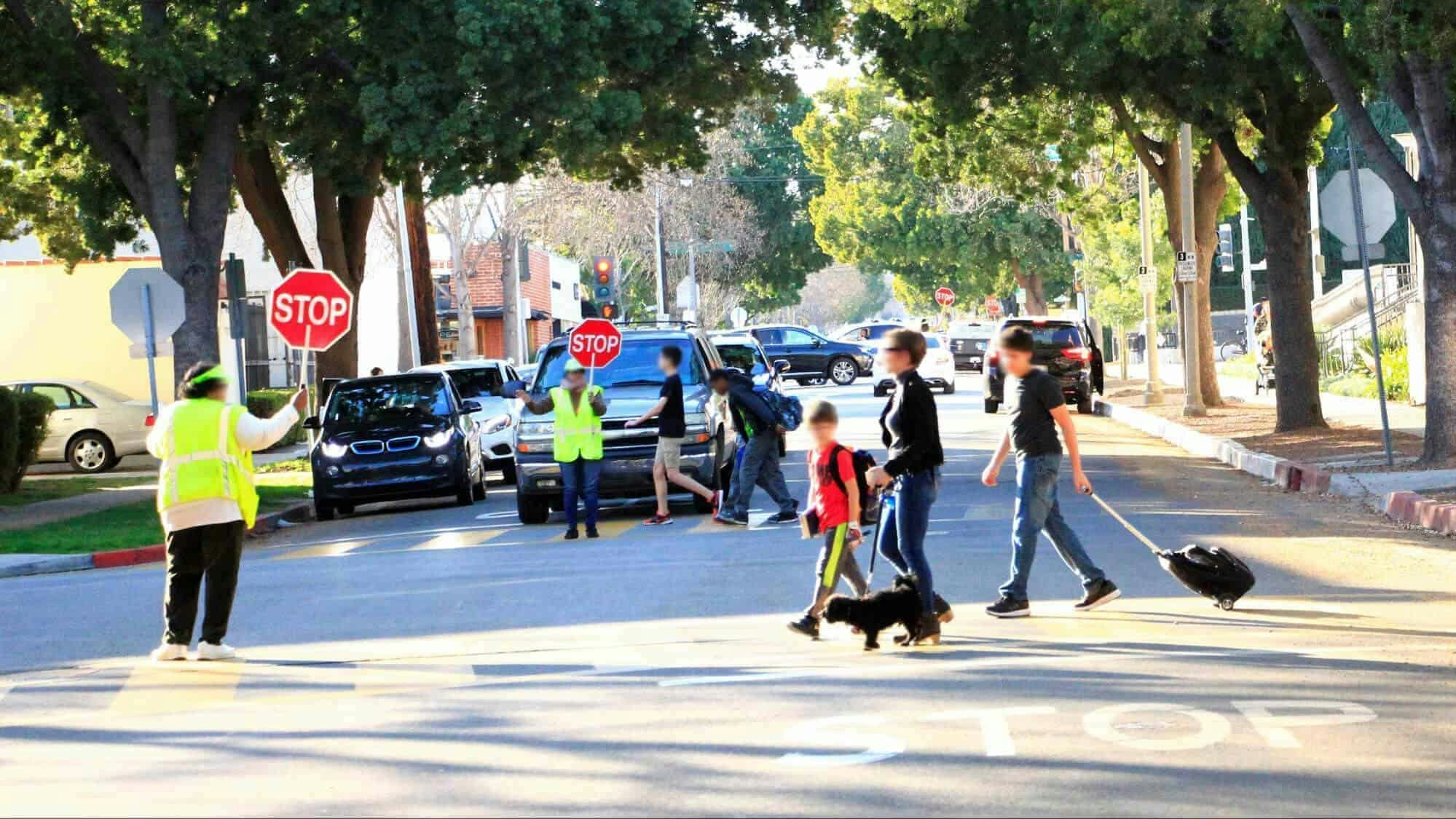
When approaching a school zone, be alert and look for pedestrians, cyclists, crossing guards/school safety patrols and school buses. Be prepared to stop.
Obey the directions of crossing guards. If you’re asked to stop – you must stop and allow the guard to safely get off the road before proceeding.
In school zones, pedestrian crossings may have yellow lines.
What Is the School Speed Limit in School Zones?
The school speed limits vary depending on where you live in the U.S. – if you want to know the specifics you can see them by selecting your state here. But these are the rules for California and they can be used as a benchmark:
- Unless otherwise posted with a traffic sign, the speed limit is 25 mph when driving within 500 to 1000 feet of a school while children are outside
- The speed limit may be as low as 15 mph in some school zones
- Always stay below 25 mph if passing a school ground without a fence if children are outside
Blind Persons
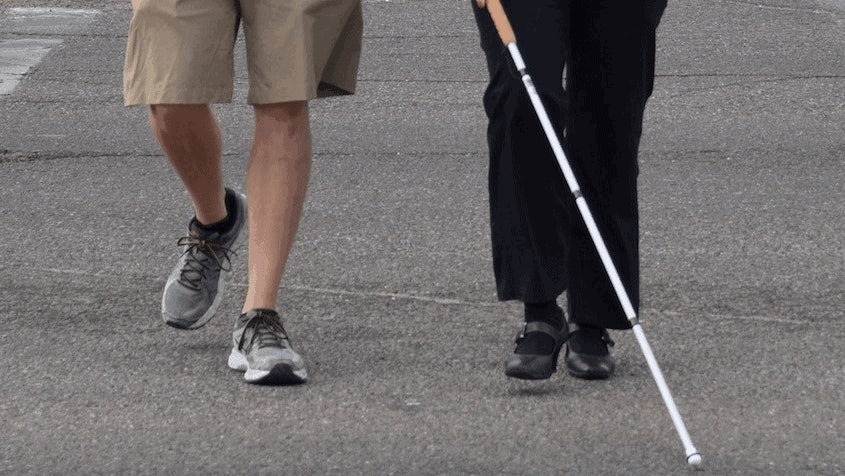
As a driver you must know how to spot and act near blind persons.
Blind persons use a white cane or a service animal to help cross the road. Give them total priority and the right-of-way even when the traffic signals or other right-of-way rules are no longer in their favor.
Stop within 5 feet of a crosswalk to ensure that people with bad sight can hear you. If driving a quiet vehicle, you must be aware that they may not hear you.

550+ exam-like questions
All you need to ace your test
Perfect for first-timers, renewals and senior citizens
Recommended articles
Ace your DMV test, guaranteed
Want to Be the Top School in Your Area?
- Simple & automated admin
- More time for teaching
- #1 learning materials for students

